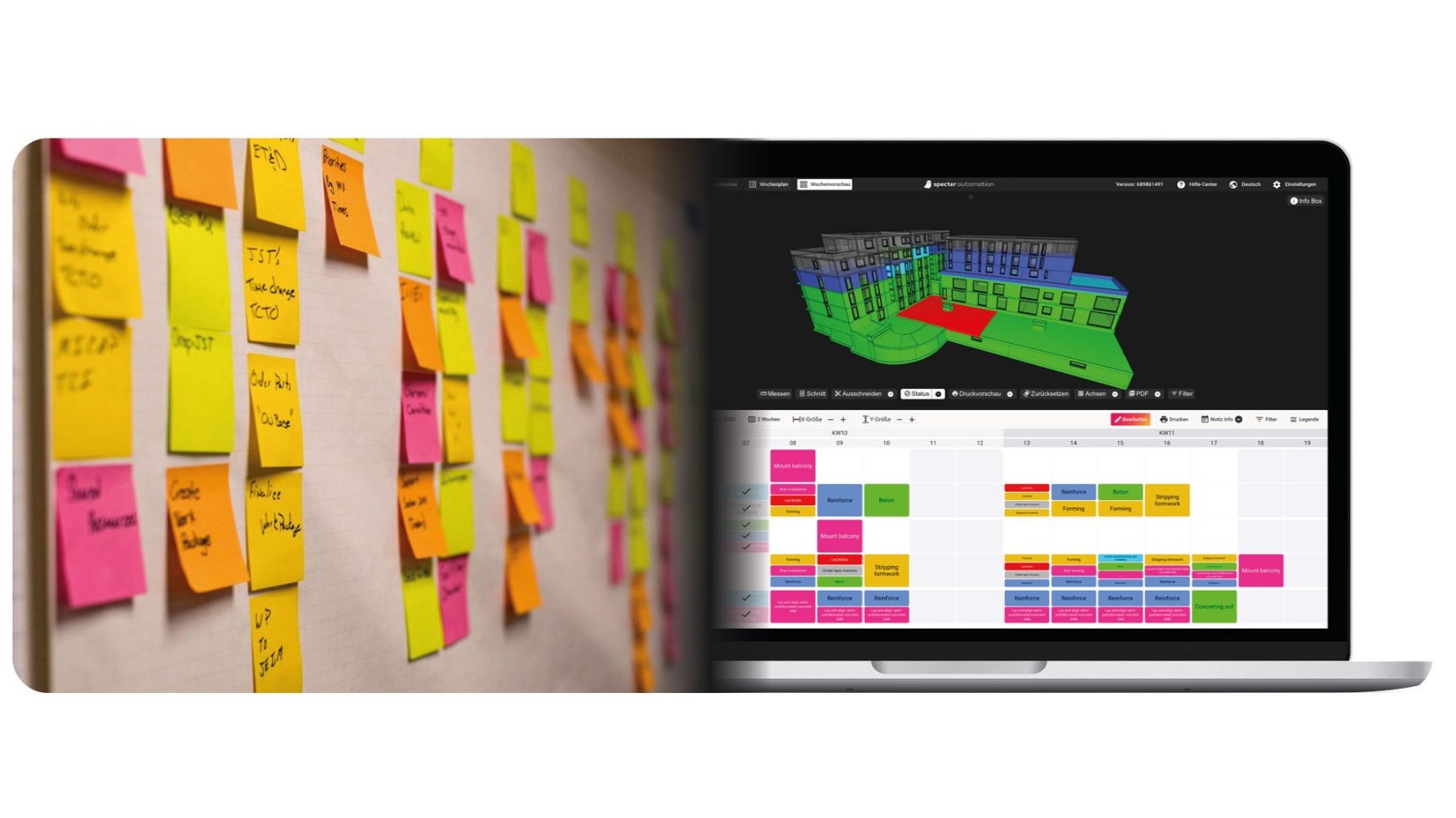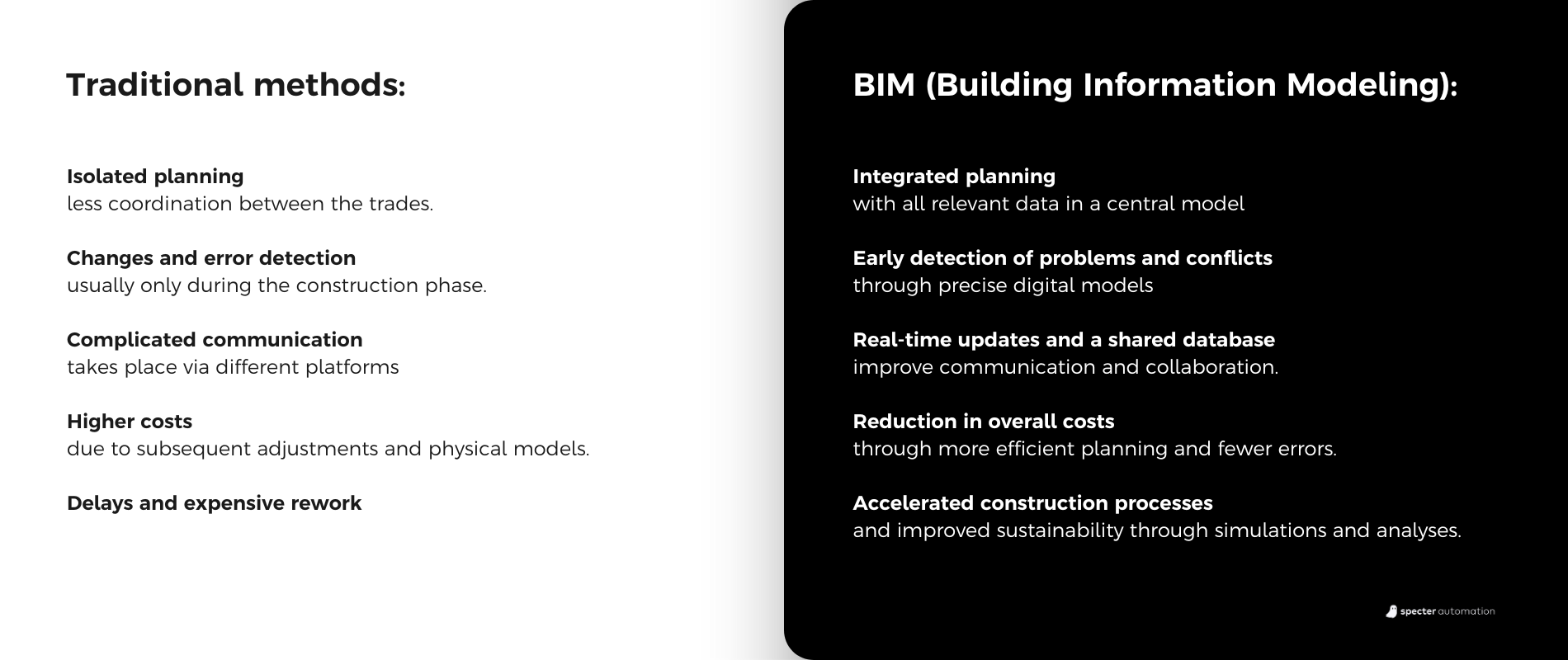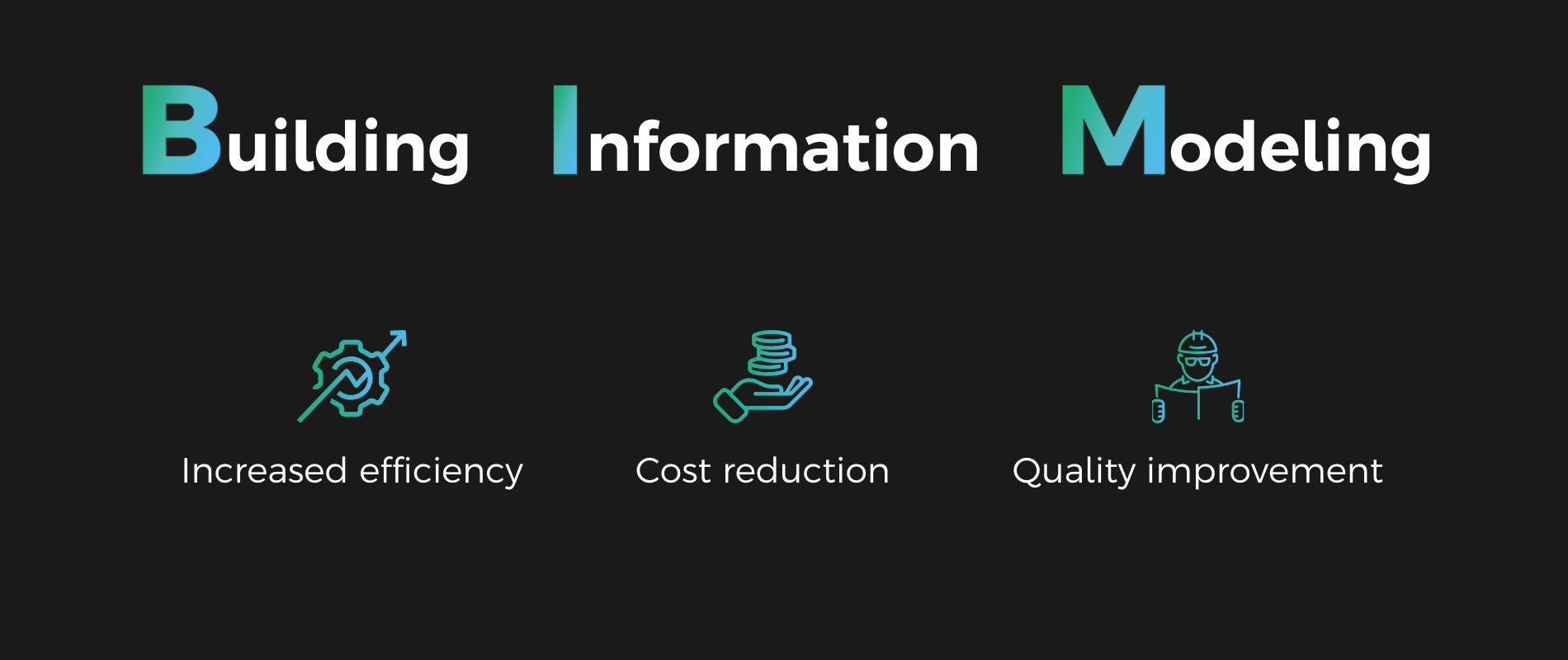The construction industry is undergoing a transformation, and one term that is becoming increasingly important is BIM. But what is the aim of BIM and why is this method becoming increasingly important? Building Information Modeling (BIM) is a digital approach that is revolutionizing the way construction projects are planned, implemented and operated. In this article, you will find out what BIM is, how the BIM method works and what its objectives are. We also show how the specter software for 3D construction site management supports some BIM use cases and helps to increase efficiency on construction sites.
What is the goal of BIM?
Definition, methods and use cases of BIM in construction with specter
Definition of BIM construction - a comprehensive digital approach
The definition of BIM construction describes an innovative approach to the planning, execution and management of construction projects. The focus is on creating a detailed digital BIM model that contains not only geometric data, but also important information on materials, costs, schedules and the operation of a building. The BIM method covers all phases of a construction project, from BIM planning to maintenance, and ensures that everyone involved is always working with the most up-to-date data. This reduces errors and changes during the construction phase, lowers overall costs and enables more precise project planning.
A key aspect of BIM is the integration of all relevant data into a common model. This means that everyone involved - from architects and civil engineers to facility managers - has access to the same information at all times. Changes are visible in real time, which improves collaboration and increases the ability to respond to unexpected challenges. In addition, BIM digitally maps the entire life cycle of a building, from the initial design idea through the construction phase to long-term use and maintenance. This comprehensive data management enables well-founded decisions and contributes to the long-term value retention of the building.

BIM as a communication platform and for optimizing construction processes
BIM serves as a central communication platform for all project participants and integrates them into a common BIM model. This breaks down communication barriers, improves collaboration and minimizes misunderstandings, as everyone involved has access to the same information. The model acts as a "single source of truth", which is particularly beneficial in complex construction projects, as different specialist disciplines have to be coordinated and requirements taken into account.
With BIM, different scenarios and options can be run through without incurring additional costs for physical models. Planners can test designs virtually and simulate the impact on schedules, costs and the environment. This leads to informed decisions and promotes innovative approaches for more sustainable and economical construction projects.
BIM planning - efficiency through precise modeling
BIM planning plays a central role in the construction process and is crucial for the successful implementation of construction projects. The use of BIM not only makes planning digital, but also dynamic and precise. All relevant building data is brought together in a digital BIM model, which serves as a central source of information. This enables precise coordination between all parties involved, from architects and engineers to building owners and facility managers.
A major advantage of BIM planning is the ability to identify potential problems and conflicts at an early stage. With the help of BIM models, for example, overlaps between different trades can be identified and rectified during the planning phase. This prevents expensive rework and delays and ensures a smooth construction process. BIM planning also enables the simulation and analysis of various scenarios, which promotes well-founded decisions and sustainable solutions.

BIM in operation and maintenance
Even after a building has been completed, BIM remains an important resource. The digital BIM model serves as the basis for the ongoing operation and maintenance of the building. Facility managers use the stored information to create maintenance plans, reduce operating costs and optimize energy efficiency. The ability to access all relevant building data makes management easier and leads to long-term savings. In addition, BIM provides precise documentation of the building's condition, which is helpful for conversions, renovations or extensions.
Goals and benefits of BIM
The BIM goals are clearly defined: The aim is to increase efficiency, reduce construction costs and improve quality in all phases of a construction project. Thanks to improved collaboration and access to up-to-date data, construction companies can plan more efficiently, minimize errors and shorten construction times. At the same time, BIM enables sustainable construction by making better use of resources and reducing waste. Another benefit is life cycle management: with a digital model, buildings can be managed efficiently throughout their entire life cycle, from planning and the construction phase to operation and maintenance.

Use cases of BIM with specter
The 3D construction site management software from specter automation supports various BIM use cases:
BIM use case 120: Preliminary design planning
specter enables the visualization of concepts and designs in 3D, which helps planners to make informed decisions.
BIM use case 130: Approval planning
specter supports compliance with regulations and standards and speeds up approval processes.
BIM use case 140: Implementation planning
During the construction phase, specter ensures precise planning and coordination through real-time data.
BIM use case 160: Construction execution
The software enables real-time monitoring of construction site processes so that site managers can continuously track progress.
BIM use case 190: Operation and maintenance
Once construction is complete, specter's 3D model serves as the basis for long-term management and maintenance.
The aim of BIM (Building Information Modeling) is to improve efficiency, quality and sustainability in all phases of a construction project. BIM enables more precise planning and execution by bundling all relevant data in a central digital model that is available to all project participants. This reduces errors, minimizes costs and shortens construction times. BIM also promotes collaboration and enables the sustainable use of resources throughout the entire life cycle of a building, from design to maintenance.
Building Information Modeling is the future of the construction industry. The method offers numerous benefits, from improved planning and communication to cost reduction and sustainability. With innovative tools such as specter, construction companies can optimize the entire construction process and better master the challenges of the modern construction world.

Kontakt
to find out more about how specter can support your next construction project:
Click Here
